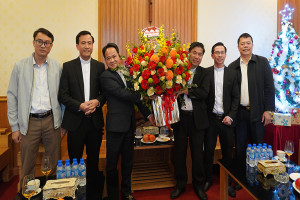
A stolen 12th century bronze Buddha statue was returned to India by the London Metropolitan Police on 15 August, coinciding with India’s 72nd Independence Day ceremony held at the High Commission of India in London. The 16-and-a-half-centimeter bronze is one of 14 statues that were stolen from the Archaeological Museum in Nalanda, Bihar, in 1961.
Detective Chief Inspector Sheila Stewart of the Metropolitan Police’s Art and Antiques Unit delivered the statue to, the Indian High Commissioner to the United Kingdom Y. K. Sinha. During their investigation, the Art and Antiques Unit, one of the oldest specialist units of the Met., found that the statue had changed hands several times over the past 57 years before surfacing at an art fair in Maastricht, the Netherlands, where the statue was identified.
“I am delighted to return this piece of history. This is an excellent example of the results that can come with close cooperation between law enforcement, trade, and scholars,” said Stewart, who was accompanied at the ceremony by officials from the UK’s Department for Digital, Culture, Media, and Sport. (The Quint)
The statue, made from bonze with silver inlays, represents the Buddha in a seated posture, demonstrating the bhumisparshamudra (earth-touching gesture). According to art historians, the statue is a prime example of Pala art, a style dating back to the time of the Pala empire (eighth–12th centuries) when the Buddhist Pala dynasty ruled much of the modern states of Bihar and West Bengal, as well as what is now Bangladesh.
In March, Lynda Albertson, CEO of the Association for Research into Crimes Against Arts— an organisation working to preserve cultural heritage—and Vijay Kumar, founder of the India Pride Project—a body dedicated to bringing back India’s lost treasures—recognized the statue at the international art fair and informed the police.

Picture of Bronze statue released by the British
Metropolitan Police. From timesofindia.indiatimes.com
The dealer and the owner of the statue were unaware of its history, and once they were informed by the Metropolitan Police that it had been stolen, they agreed that it should be returned to India.
“We have established there was no criminality by the current owner or the dealer who was offering it for sale,” noted Detective Constable Sophie Hayes. “Indeed, from the outset they have co-operated fully with the police to resolve this matter and they have made the decision to return the sculpture via the police.” (League of India)
High Commissioner Sinha expressed joy over the return of the “priceless Buddha,” which he described as a “wonderful gesture” and a particular honour for him, considering his own roots in Bihar. “I hope it will now go back to where it originally belongs. . . . On our Independence Day, it [the return of the statue] highlights the multi-faceted cooperation between our two countries.” (The Times of India)
“As we celebrate India’s Independence Day, I am proud to highlight the latest example of the UK’s cultural diplomacy in action,” said Michael Ellis, Britain’s Minister for Arts, Heritage and Tourism, on the occasion of the handover ceremony. “Thanks to the work of the Metropolitan Police’s Arts and Antiques Unit, we are one of the first countries to recover one of the 14 elusive Buddha statues stolen from Nalanda nearly 60 years ago. This underlines how law enforcement and the London art market are working hand in hand to deliver positive cultural diplomacy to the world.” (League of India)
According to the Archaeological Survey of India, the statue is currently at the Indian High Commission in London and will soon be sent to New Delhi, and eventually to Nalanda.
Source: buddhistdoor.net




